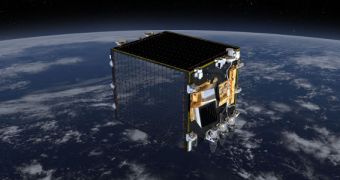Scientists at the European Space Agency (ESA), who manage the Proba-V cubesat, say that the spacecraft has been able to achieve some remarkable performances lately, after just two months spent in space. This spacecraft is the fourth in the PROBA series, and the V in its name stands for vegetation.
Thus far, the tiny satellite has conducted six 10-days syntheses of the entire planet. In addition, its instruments were also able to produce 65 daily global maps of vegetation health, and snapped more than 5,000 individual images over areas of interest to scientists.
Around a hundred research teams around the world are currently using the wealth of data Proba-V is sending back to Earth. The cubesat is able to cover around 93 percent of the planet's surface every day, meaning that it can produce a full-Earth view of vegetation once every two days.
Proba-V observes the plant from a geocentric Sun-synchronous orbit. The spacecraft was launched into space aboard a Vega VV02 delivery system, on May 7, 2013. Launch occurred from the ESA Kourou Spaceport, in French Guiana, South America.

 14 DAY TRIAL //
14 DAY TRIAL //